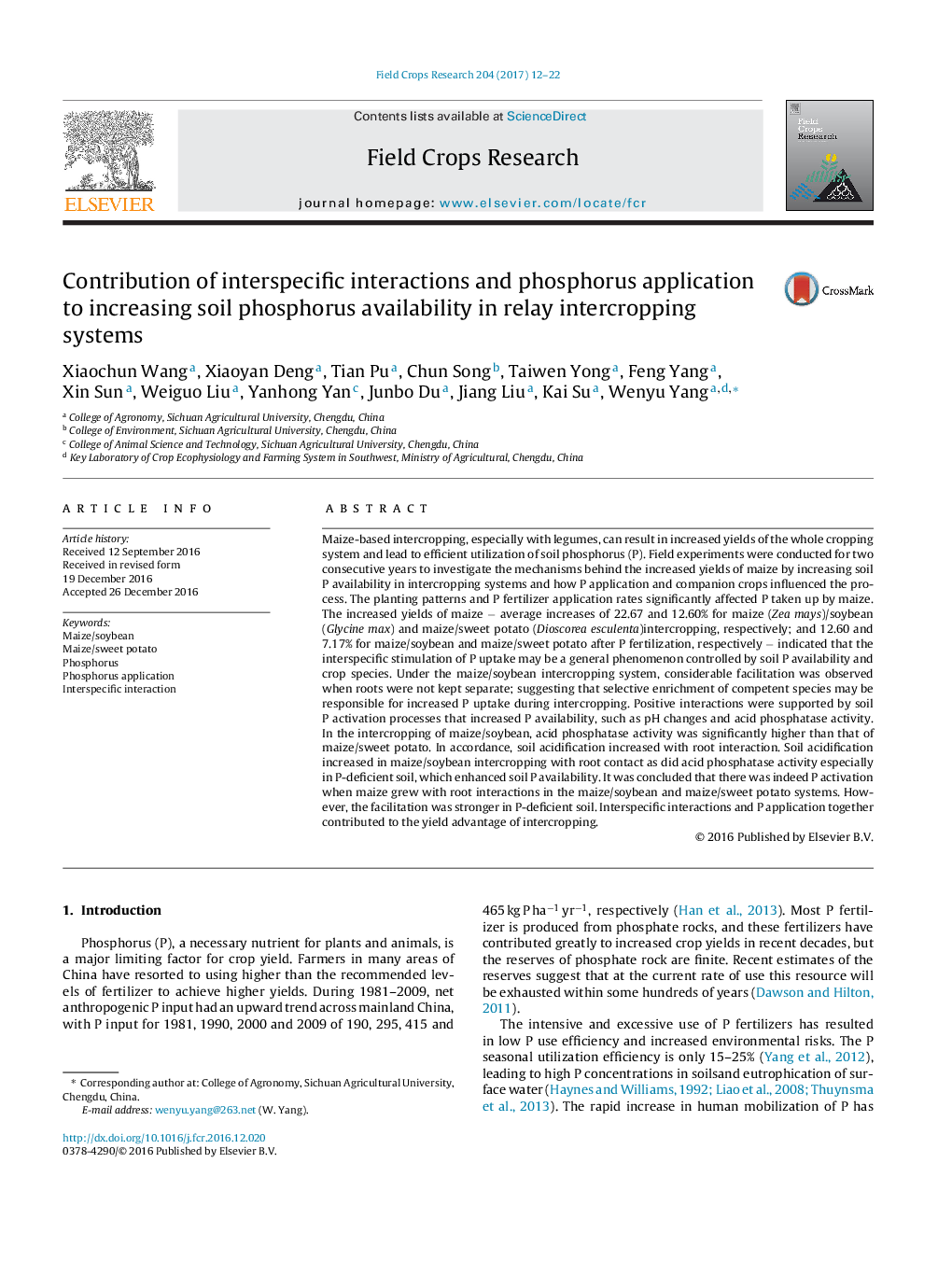| Article ID | Journal | Published Year | Pages | File Type |
|---|---|---|---|---|
| 5761606 | Field Crops Research | 2017 | 11 Pages |
Abstract
Maize-based intercropping, especially with legumes, can result in increased yields of the whole cropping system and lead to efficient utilization of soil phosphorus (P). Field experiments were conducted for two consecutive years to investigate the mechanisms behind the increased yields of maize by increasing soil P availability in intercropping systems and how P application and companion crops influenced the process. The planting patterns and P fertilizer application rates significantly affected P taken up by maize. The increased yields of maize â average increases of 22.67 and 12.60% for maize (Zea mays)/soybean (Glycine max) and maize/sweet potato (Dioscorea esculenta)intercropping, respectively; and 12.60 and 7.17% for maize/soybean and maize/sweet potato after P fertilization, respectively â indicated that the interspecific stimulation of P uptake may be a general phenomenon controlled by soil P availability and crop species. Under the maize/soybean intercropping system, considerable facilitation was observed when roots were not kept separate; suggesting that selective enrichment of competent species may be responsible for increased P uptake during intercropping. Positive interactions were supported by soil P activation processes that increased P availability, such as pH changes and acid phosphatase activity. In the intercropping of maize/soybean, acid phosphatase activity was significantly higher than that of maize/sweet potato. In accordance, soil acidification increased with root interaction. Soil acidification increased in maize/soybean intercropping with root contact as did acid phosphatase activity especially in P-deficient soil, which enhanced soil P availability. It was concluded that there was indeed P activation when maize grew with root interactions in the maize/soybean and maize/sweet potato systems. However, the facilitation was stronger in P-deficient soil. Interspecific interactions and P application together contributed to the yield advantage of intercropping.
Related Topics
Life Sciences
Agricultural and Biological Sciences
Agronomy and Crop Science
Authors
Xiaochun Wang, Xiaoyan Deng, Tian Pu, Chun Song, Taiwen Yong, Feng Yang, Xin Sun, Weiguo Liu, Yanhong Yan, Junbo Du, Jiang Liu, Kai Su, Wenyu Yang,
